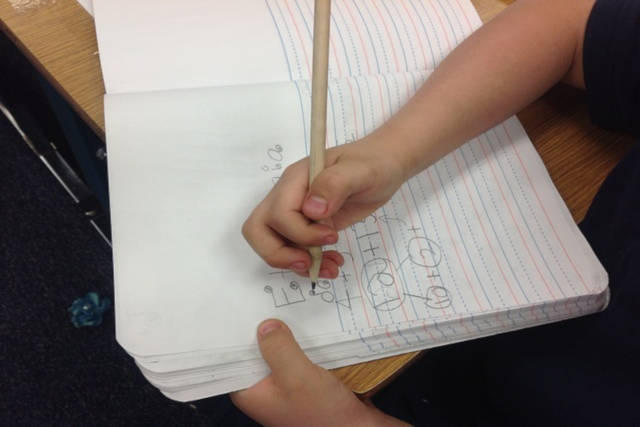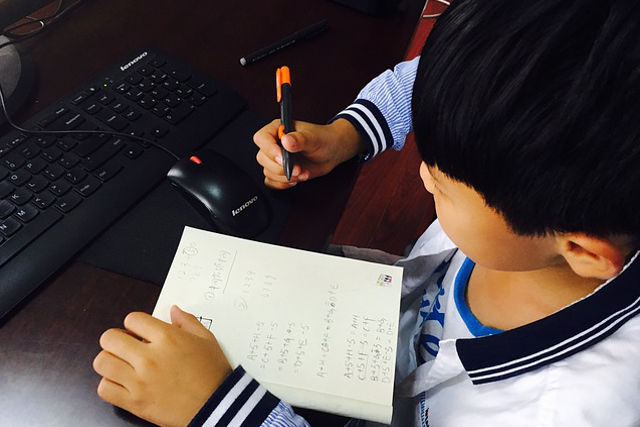Has the difficulty level of PSLE math paper risen in the last few years? Peggy Foo, a numeracy specialist and ex-teacher shares her insights with TNAP.

Based on my observation of past PSLE math papers, there are more challenging questions in Paper 1 and newer questions set in Paper 2. Paper 1 is the first part of the exam paper which generally contains basic questions worth 1 or 2 marks. Paper 2 typically contains word problems worth 3 to 5 marks.
Though some may argue that the increased number of tough questions in Paper 1 has raised the difficulty level, others observe that some of the challenging problems in Paper 2 are now broken down into parts (parts a and b). This helps to ‘simplify’ the problem sum as children are ‘guided’ to solve the intermediate step in the first part of the question, which usually leads them to the final answer in the second part.
Dangers Of Excessive Drill And Practice
However, the sentiments of most parents with children taking PSLE remain the same. They worry and undergo tremendous stress. During my workshops, these are the commonly asked questions by parents:
- How can I choose a good assessment book?
- Will doing more of the practice papers and assessment books guarantee good results in her PSLE Math?
- Why is it that even after my child has endless practice doing practice papers, he still performs badly in his word problems for his math exams?
The above recurring questions stem from a common widespread belief that exposure to a wide range of questions and extensive drill and practice is the formula to acing PSLE math. While drilling might be useful for answering easier questions that require formula or basic calculation, it does not necessarily help in solving word problems.
Long hours of practice without proper understanding may cause a child’s interest and motivation to learn a subject to plummet. What’s more, children who do not improve despite their relentless effort poured to drill and practice may lead them to believe that they are just ‘not good’ at math.
Perhaps the question parents need to ask and reflect is this:
- Would constant drill and practice approach be beneficial to them? In what areas of math will this approach help them improve?
- If a question was presented to my child with new terms, new diagrams or graphs, would they be able to understand and interpret them?
- How can I pinpoint my child’s difficulty when answering problem sums?
One way is using Newman’s 5-Step Model to diagnose your child’s difficulties in the problem-solving process. The model categorises the difficulties faced in 5 stages. Below is a summary of Newman’s Model, with suggested questions and interventions.
1. Reading Stage
Difficulty: Not able to recognize and/or read the problem.
Questions you can ask: Can you read the question to me?
Suggested intervention: Help your child develop language skills. E.g. Word recognition, vocabulary, preposition terms.
2. Comprehension
Difficulty: Not able to understand the problem even though they can read the problem aloud.
Questions you can ask: Can you tell me what the question is asking you to do?
Suggested intervention: Help your child interpret the meaning of the words and demonstrate understanding using pictorial representation.
3. Transformation
Difficulty: Lack the knowledge of the method and/ or not being able to transform the variables into mathematical form.
Questions you can ask: What method or strategy would you use to find the answer?
Suggested intervention: Help your child learn a set of approaches to problem-solving e.g. bar modelling method and how to combine this method to solve problems.
⇒ Related Read: How to use bar modelling to solve problem sums
4. Process skills
Difficulty: Not able to compute accurately.
Questions you can ask: Can you show me how you work out the answer?
Suggested intervention: Help your child improve numerical calculations and procedural work
5. Encoding
Difficulty: Not able to fit the computed answer back into the problem.
Questions you can ask: Can you write down the answer to the question? Does the answer make sense, is it realistic?
Suggested intervention: Help your child fit the answer back into the problem and check if it is consistent with other information provided
While coaching your child in math, look at your child’s mistakes and identify the stage that they are currently at. Ask the suggested questions to assess their understanding to find out what they are struggling with.
Once you have identified the stage, intervene according to their needs. This is a more direct and targeted approach as compared to excessive drill and practice, where the causes are not addressed.
All the best in your math practice!
Contributed by Peggy Foo.
Peggy was with the Ministry of Education for ten years before she joined Marshall Cavendish Institute as the Head of Lesson Study Academy and lecturer. A passionate and engaging educator, Peggy has trained many preschool teachers and developed a numeracy curriculum for an anchor childcare centre. She holds a Masters of Education and a Post-Graduate Diploma in Education.
* * * * *
Looking to reach over 100,000 parents in Singapore? Let us amplify your message! Drop your contact details here, and we’ll reach out to you.
Discover exciting family-friendly events and places to explore! Join our Telegram channel for curated parenting recommendations.

























































